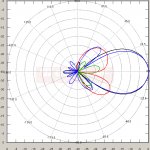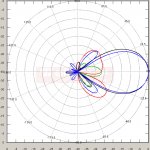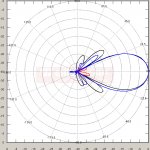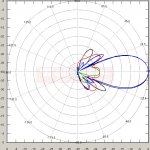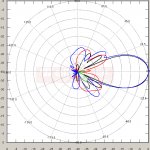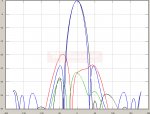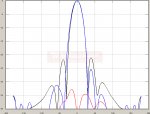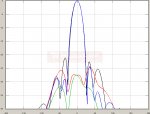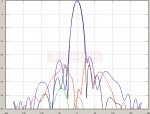TetraAnt 2200 - 2800 RSLL
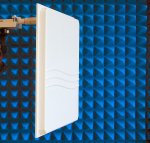

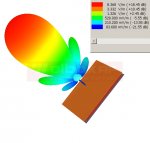
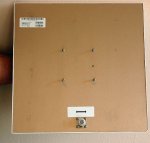
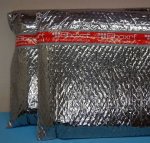
Wideband microstrip planar antenna, 2.2 - 2.8 GHz, SLL <= -20 dB
- Frequency range 2200 - 2800 MHz
- Sidelobe level <= -20 dB for the whole operational band
- Peak gain: 17 [+0.5 / -1.5] dBi
- Polarization: linear
- Connector N(f) x 1
- Dimensions: 33 x 33 x 4 [cm]
Microstrip wideband panel antenna TetraAnt 2200-2800 RSLL operates over 2.2 - 2.8 GHz E band, the realized peak gain is 17 dbi, VSWR is better than 2:1. Antenna has the Low Sidelobes level over the whole operation frequency range, better than -20 dB.
Besides the Low SLL, antenna exhibits good polarization properties. See patterns below. SLL stands for SideLobe Level.
The panel comes with raw pattern data as a *.txt file. The file has the following structure: "freq - comp - angle - level", from 2150 - 2850 MHz, with the 50 MHz frequency step and 2 degrees angle steps.
The level is in the linear step, and components are E (electrical) and H (magnetic). The "waves" symbol on the dielectric cover shows the E-plane. In the example below, freq = 2150 MHz, component E, step = 2°, and the level (in a linear scale).
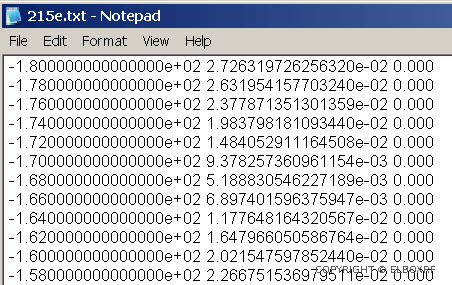
TetraAnt 2200-2800 RSLL is rugged, compact and completely weatherproof and can be used in the lab and for open-field application.
It is equipped with N(f) connector on the back and 4 x M5(metric) bolts for mount purposes.
- Product is covered by a 2-year warranty
- Supported Product - ask the designer: fert(at)elboxrf(dot)com
- 2018 Design - designer Przemysław Fert
Price: 2250 EUR
TetraAnt 2200-2800 RSLL Parameters
Electrical Parameters
- Frequency Range: 2200 - 2800 MHz (E band)
- Useful Frequency Range: 2150 - 2850 MHz
- Impedance: 50 Ohm
- VSWR: <=2.0; <=1.8 at 2200 - 2800 MHz
- Gain: 17 [+0.5/-1.5] dBi
- Sidelobe Level: <= -20 dB
- Back Radiation: <= -32 dB, see radiation patterns
- X- (or cross-) polarization components: see radiation patterns
- E-plane and H-plane HPBW: 27.6 ° at 2.2 GHz. 20.6 ° at 2.8 GHz
- Maximum Power: 10 W
- Protection Against Static Electricity: The connector's internal pin is grounded
Mechanical Parameters
- Technology: Microstrip
- Connector: N Female on the back, tested to 12 GHz
- Dimensions: 330x330x40 mm, with the connector
- Dielectric Radome: White UV resistant PVC
- Base: High strength aluminum alloy
- Construction: Completely weatherproof
- Operating Temperature Range: -30 to +50 C
- Mounting Kit: no
- Antenna's mass: 1.45 kg
TetraAnt 2200-2800 RSLL - VSWR
- The horizontal red line: VSWR = 2.0
- Y axle starts at VSWR = 1.0
- Y division: 0.2
- X division: 80 MHz. The X full scale is 2100 - 2900 MHz
- Markers are on the top, left hand corner
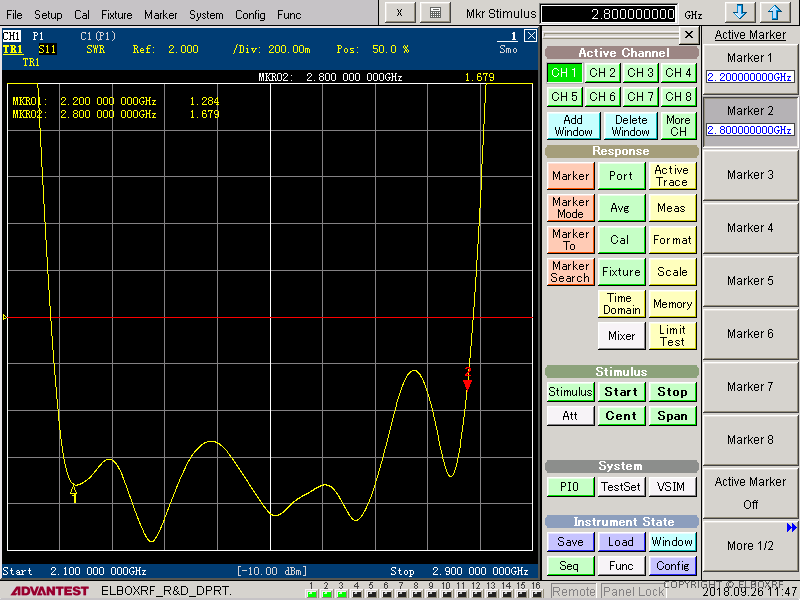
TetraAnt 2200-2800 RSLL Realized Gain
The antenna's gain was measured in the slant ranges, with two-antenna method.
This is realized gain measured on the antenna's connector. It takes in to account all losses.
One can see a little gain drop at about 2720 MHz. This is where the VSWR (seen at the figure above) increased a little, to the value of 1.8 Using the VSWR-to-PowerLoss rule available here, we will see that for VSWR = 1.8 losses are about 0.4 dB, what is actually seen on the gain graph below.
This is fine real-world example how VSWR affects the gain.
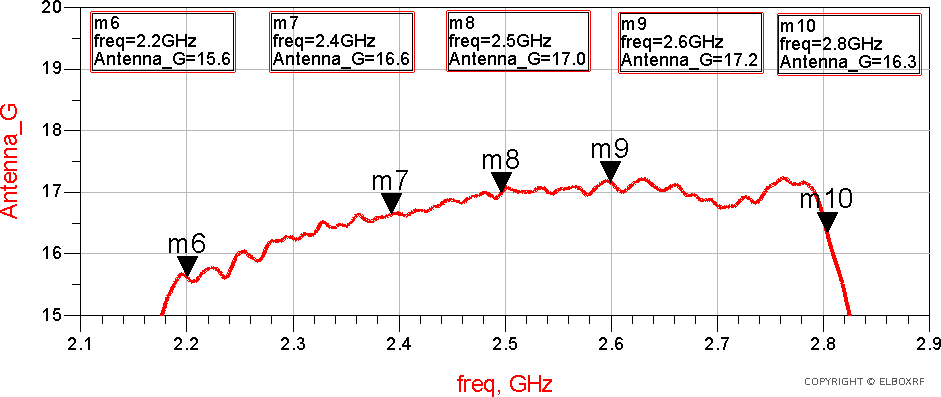
Small ripples has been made by some measurements imperfections like small reflections. The figure below shows the same gain curve after application the smooth statistical function to smooth the raw data.
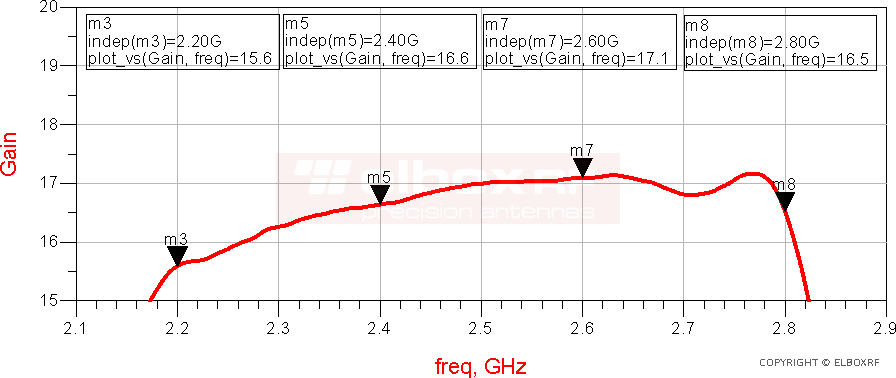
Radiation Patterns in Polar Form - TetraAnt 2200-2800 RSLL
For the sake of clarity, radiation patterns are presented for limited frequency points: 2150 - 2200 - 2500 - 2800 - 2850 MHz. The full patterns data are for 2150 to 2850 MHz with the 50 MHz step.
If some component is invisible, it means that has lower value than -40 dB. So it is out of the scale. Patterns are referenced to 0 dB, the full scale is 40 dB.
- H polarization plane, co-polar: BLACK
- H polarization plane, cross-polar: RED
- E polarization plane, co-polar: BLUE
- E polarization plane, cross-polar: GREEN
E - electric, H - magnetic
Radiation Patterns in Rectangular Form - TetraAnt 2200-2800 RSLL
Radiation patterns presented in the rectangular form.
The final comment: This wideband, low SLL antenna operates over the 2200 - 2800 MHz frequency range and has 600 MHz band in which all parameters like VSWR, cross polar radiation, realized gain and finally sidelobe level are more than good. The fractional bandwidth is 24%, so this is truly wideband antenna.
It was not trivial to develop this antenna and this is a product that works as intended.
